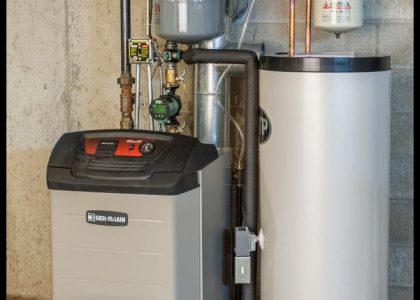Our apologies to Thomas Paine who coined his famous phrase to inspire the American Revolution, but in a prophetic sense it seemingly applies to all things mechanical. This is particularly evident as we are approaching our seasonal, deepening cold cycle. The car doesn’t start, or does so hesitatingly and emits strange noises upon doing so. You resort to a shovel after the snow blower quits, etc., etc.
Similarly your heating system is working harder and longer to offset Mother Nature’s Global Cooling Cycle, like it or not. So we must “deal with it” as the expression goes. Approaching this from a positive perspective it is also an opportunity to evaluate your heating system’s performance, both the good and bad.
Obviously we want to monitor the heating system while it is at a peak demand, placing the most severe duty upon it. Mother Nature is fairly cooperative in this respect, and we like to think particularly so in New England, our venue. Deepest cold is typically about a month (plus or minus) after the Winter Solstice (Dec. 21) when we are not fooled by a “January Thaw”. So ultimately just watch the Weather Report.
The objective must be to determine if the heating system is capable of heating your structure both adequately and reliably at peak (deepest cold) demand. Ideally this exercise would be unnecessary if the system was designed around a heat loss calculation and the characteristics of each room using a Heat Loss Software Program or Tables while using the Meteorological Data for your area. Unfortunately in particularly older dwellings changes have been made not only to the physical structure, but in central heaters (boilers, furnaces), distribution (piping, ducting) and radiation (radiation, radiators, fan units, registers), windows/doors and insulation that have impacted heating both positively and negatively. This is why it is most effective to determine your situation at peak demand.
Therefore we will look at the central heater (boiler, furnace) cycling and the resultant effect upon room temperature(s). In between these are the heat delivery characteristics of piping, ducting (or both) to achieving the result(s).
So, on that deep(est) cold January overnight prepare yourself by setting your thermostats to the normal (day?) temperatures (no setbacks — this is a peak load test) and take note of:
- The percentage of time that your burner (oil or gas) is firing.
- The percentage of time that the furnace fan or boiler circulator(s) operate.
- The actual temperatures of each room vs. the area (zone) thermostat setting.
Note: If you have a steam system, Item 2 is not applicable. The radiator vents are the only adjustment.
Firstly, try to balance your room temperatures to settings by adjusting register openings, wall or kick space (toe) heater speeds, steam radiator vent settings over a period of hours preceding peak cold.
- Can you bring all rooms up to temperature? Within a zone (thermostat) area or total? Capacity issue — see further.
- Can you balance each room? If not note the deficiency by room for future correction.
Secondly, monitor your distribution components (furnace blower or boiler circulators) that are related to these room temperature observations (excepting steam).
- If the furnace blower (FHA System) is running constantly and temperatures are not met it is likely that the blower speed (heat delivery rate) must be increased. If it runs intermittently with significant “rests” between cycles, there is likely a burner, air temperature or other distribution capacity issue. See further.
- Similarly, in a boiler (FHW System) observe the circulator operation per zone and overall. If the zone or area circulator runs continuously there are three possibilities:
- The zone radiation (capacity) or piping is undersized or incorrect.
- The zone may be air-bound and need “purging”, i.e. water-flushing air removal. Check for incrementally cool or cold registers.
- The circulator is incorrectly sized (too small).
- The boiler water temperature is low (unsustainable). A boiler delivery issue. See further.
Thirdly, observe the burner cycling times at peak demand in light of the prior distribution issues.
- If the furnace (FHA) gas burner operates virtually continuously, the unit is at capacity (undersized). Note: On gas units the firing rate is typically fixed or self-regulating.
- If the furnace (FHA) oil burner operates less than continuously (particularly less than half), the unit is probably over sized.
- If the boiler (FHW) oil burner operates virtually continuously, the unit is either at capacity (undersized) or if not the firing rate should be increased as permissible toward requirement. Note: On most boilers the operating temperature may be increased somewhat to gain some capacity, subject to functional limits. Trained Technician recommended.
- If the boiler (FHW) oil burner operates less than continuously (particularly less than half), the unit is probably over sized.
Summarizing, this is a layman’s exercise to provide working data for a qualified Technician to pursue. There are other diagnostic methods, particularly in temperature measurement of FHW piping distribution to optimize your empirical determinations. A degree of risk is involved and should be deferred to a qualified Technician. You have done most of the leg work, isolated the issues and become an informed client. Let him take it from there.
Meanwhile, enjoy the rest of our winter.

